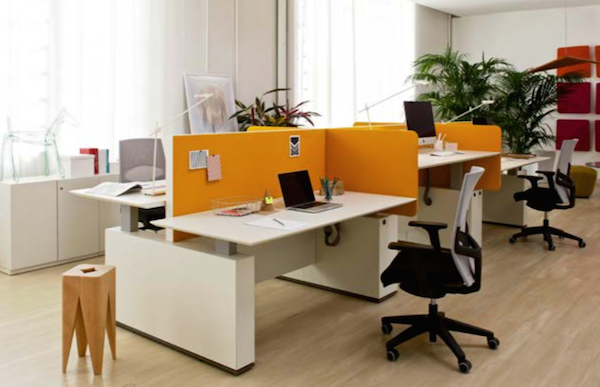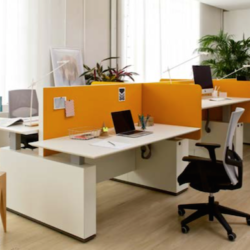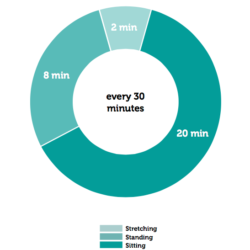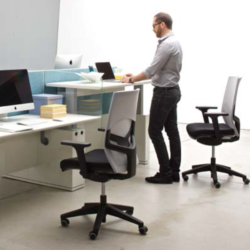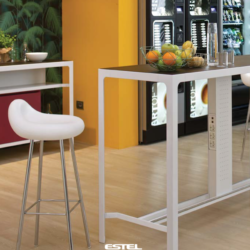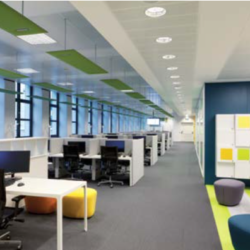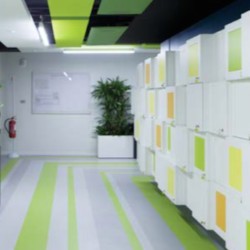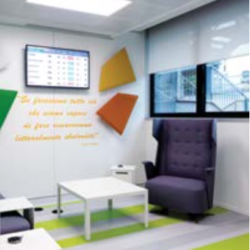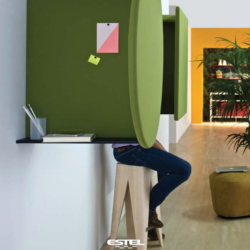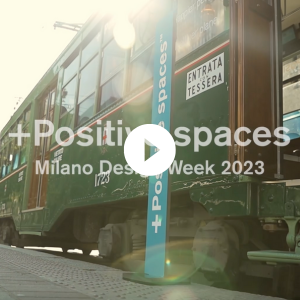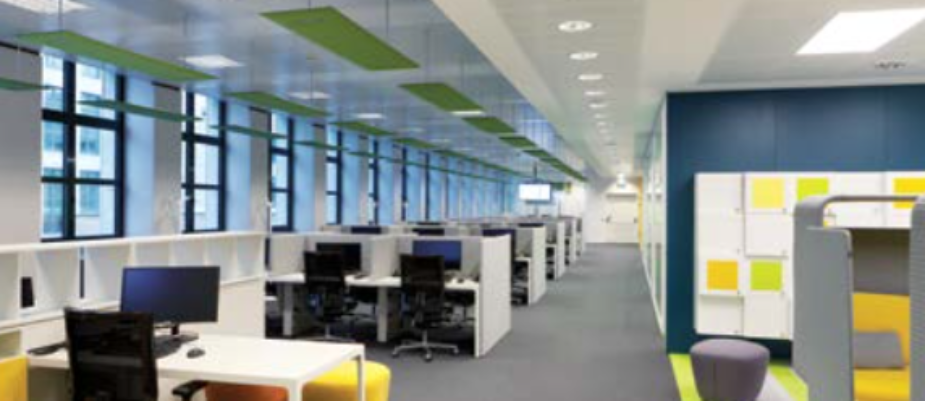
The meeting organized by Estel at Intesa San Paolo Pavilion in Expo Milano, proved that Italian firms, too, can adopt new approaches of Design Thinking to meet the complexities of Smart Working. In a lively and dense stream of presentations, interviews, videos and new installations, Estel hasn’t just shown products, but also a clear and consistent strategy.
Established 80 years ago and always working in the field of both home and office furniture, Estel is in a position to bring a domestic mood into an office, according to the Smart Working mode, and to supply a complete range of advanced ergonomic furniture like the height-adjustable desks, units provided with recharge points and acoustic comfort components.
There is no unambiguous answer to meet the challenges posed by the Smart Working. Explains Alberto Stella, CEO Estel “From our side, the strong belief of being what we have always been Flexible, proactive, open. We must know how interpret, decline, accompany, dialogue and often suggest by means of skills acquired on the field. In a word, we must be Smart, as the phenomenon to which we refer. To face the challenges of the Smart Working, translating Smart Office when it comes to interior design, it is a complex, articulated topic that affects us directly as design producer”.
Among the products that reflect this approach, there il EVO Sitting-Standing Desk System (electric linear actuator system Linak) that responds to the most recent indications on ergonomics by providing a tool that ensures well-being, efficiency and quality to the work day.
What benefits can be derived by alternating the two postures? Professor Francesco Marcolin, Professor of Ergonomics at the University of Trieste and Udine, explains “Both a seated and a prolonged standing posture cause discomfort and possible risks for cardiovascular disease. Alternating between the two seated and standing postures has proved to the best solution for office work, even better if also associated with moderate movements. These are the ideal conditions that can certainly help the operator to work and feel better. Moving around while working, not tiring the osteo-skeletal structures like the lumbar spine or lower back, and not tiring the legs, but alternating positions, allows a natural regulation of breathing and heartrate.
This results in greater oxygenation, without compressing the chest and therefore better cognitive efficiency, performance and a general sense of well-being. For this reason, alternating the standing and sitting positions with desks that raise and lower to the correct height is necessary and absolutely preferable”.
How can you transform your employee’s needs into opportunities and “energy” for the business? How can you apply the concepts of Smart Working in the real office? These are questions we find the answers for in the recent BPM experience. At the end of 2013 the credit institution started investing in a rethinking of the spaces, including a concentration room, unassigned but bookable work stations, phone booths, areas for relaxing and socialization available for the employees.
The extraordinary results that have been obtained from the first project oriented towards the Smart Office, coordinated by Progetto CMR with the Estel being involved for the furnishings, open the doors to a pathway that will also be applied in the head offices of the Group.
